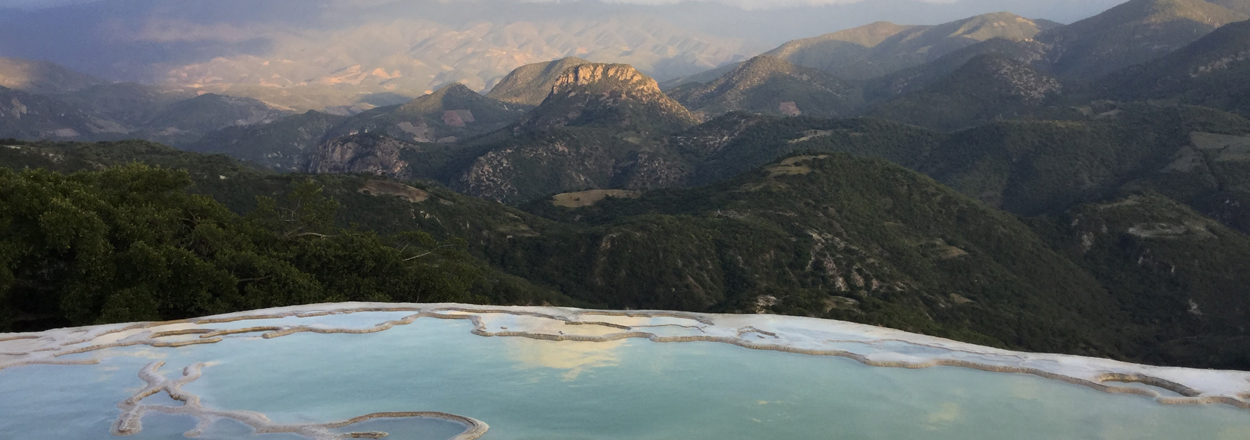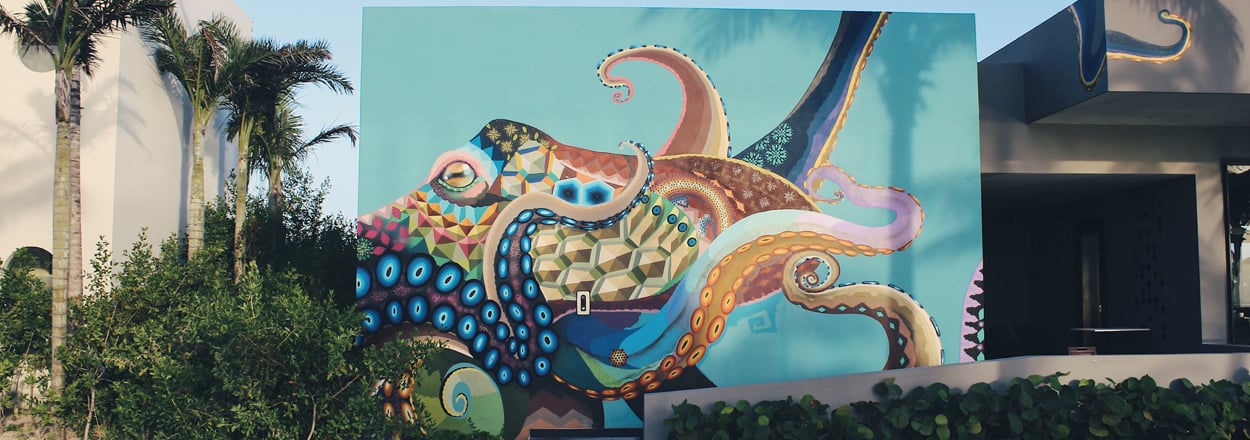When you picture a vacation to Mexico what comes to mind? Is it white-sand beaches and turquoise waters? Perhaps its all-inclusive resorts dotted with swim-up bars and all-you-can-eat buffets. Or, it might be iconic attractions like ancient Mayan ruins and stunning cenotes.
There’s no denying that all of these things are part of what makes Mexico so special. However, beyond the top sights and well-traversed tourist attractions, there’s another side to the country that’s waiting to be explored.
This is Mexico less-traveled, a collection of lesser-known places and attractions that should be on your radar for the ultimate off-the-beaten-path experience.
Grutas Tolantongo
If rest and relaxation are at the top of your travel wishlist you won’t want to miss a visit to Grutas Tolantongo, a lavish hot spring resort with sweeping views of the Mezquital Valley below. The resort is located a few hours north of Mexico City and is a truly unique experience with a series of man-made pools that are warmed by the surrounding volcanic mountains.
View this post on Instagram
When you’re done soaking, check out the resort’s onsite cave, hot spring river and kid-friendly pool complete with a thrilling waterslide.
Pequeño Seúl
For a taste of Korean culture south of the U.S. border visit Mexico City’s famous Pequeño Seúl. Also referred to as ‘Little Seoul’, Pequeño Seúl is a small neighborhood in La Zona Rosa where Mexican and Korean lifestyles collide with over 9,000 Koreans local to the area. As such, visitors to Pequeño Seúl can enjoy a bevy of authentic Korean establishments including restaurants, bars, supermarkets, famous skincare shops, saunas, spas and more.
View this post on Instagram
If you’re interested in exploring Pequeño Seúl keep an eye out for the streets around Hamburgo, Praga, Berna and Biarritz.
Hierve El Agua
The result of calcification, Hierve El Agua is a distinct natural formation where a once rushing waterfall now appears to be frozen in time. Interestingly, the word hierve means ‘to boil’ in Spanish, however, these falls aren’t boiling at all. In fact, this awe-inspiring attraction formed after mineral water pushed through karstic limestone many years ago, resulting in the calcified deposits that are seen today.
View this post on Instagram
This natural wonder is open to the public and visitors can explore two additional mineral pools at the edge of the falls. What’s more, the pools average a pleasant 70 degrees Fahrenheit making them the perfect place to take a dip during your mountain adventure.
San Cristóbal de las Casas
Part of Mexico’s Pueblos Mágicos (Magical Towns), San Cristóbal de las Casas is an impressively preserved collection of baroque and neoclassical buildings, some of which date back to the year 1500. Ornately decorated featuring bright, bold colors and intricate details, two of the area’s most notable buildings are the Cathedral of San Cristóbal Mártir and Ex-Convent of Santo Domingo de Guzmán.
View this post on Instagram
In addition to its stunning architecture, there is plenty of fun to be had in San Cristóbal de las Casas. Explore one of the town’s notable museums such as Centro de Textiles del Mundo Maya or Museo de Ambar, stroll through small markets and sample local fare or take a day trip to the stunning Sumidero Canyon just 45 minutes away.
Bacalar Lagoon
For picture-perfect crystal-clear waters head to the Yucatán Peninsula’s Bacalar Lagoon a historic spot that, similar to San Cristóbal de las Casas, was dubbed a ‘Magic Town’ by Mexico’s Department of Tourism in 2006. So what makes this place so special you ask? The spectacle lies in the waters of Bacalar Lagoon themselves as when the sunlight hits the sparkling waves just right at least seven different tones of blue and green are reflected. This is how the body of water got the nickname Lagoon of the Seven Colors.
View this post on Instagram
Travelers looking to experience the beauty of this natural wonder for themselves will be happy to know that it’s just a stone’s throw away from popular Yucatán destinations such as Cancun, Riviera Maya and Tulum. While in the area, be sure to check out other attractions such as Fort San Felipe, local food and drink, Cenote Azul and the stromatolites, some of the earliest fossilized evidence of life on Earth. What’s more, Bacalar Lagoon is also a popular destination for kayaking so be sure to hit the water while you’re in town.
Palenque
Chichén Itzá, Teotihuacán and Tulum all rank high on the docket when it comes to visiting Mexico’s many ancient ruins . But what if we told you that there was another, less tourist-packed, Mayan city that deserves your attention? Enter Palenque, an impressive archeological site that dates back to 600 CE. Located in the southern state of Chiapas, Palenque is believed to have been one of the most influential political centers of Mayan civilization.
View this post on Instagram
The ruins that can be seen today are nothing short of astounding featuring several well-preserved palaces, temples, courtyards and terraced fortifications that you’ll be itching to explore.
Valle de Guadalupe
The Napa Valley of Mexico, Valle de Guadalupe is the spot to be for wine connoisseurs. Producing 90% of all wine that hails from Mexico, Valle de Guadalupe is chock full of boutique wineries (200 and counting), 5-star restaurants and luxury hotels.
View this post on Instagram
While many of the attractions in Guadalupe Valley are open year-round, the best time to visit is during the summer months of May through October. During this time, travelers can enjoy sweeping views of vineyards and the stunning natural landscape as they sip on curated blends paired with expertly crafted dishes.
Copper Canyon
If you thought that the Grand Canyon was ‘Grand’ wait until you see Chihuahua’s Copper Canyon, a series of six red rock canyons that span northern central Mexico. Dumbfoundingly pretty, this UNESCO World Heritage Site is a great destination for hiking, camping, mountain biking, ATVing, horseback riding, guided tours and more. You can even ride El Chepe, a railroad that spans the entirety of the canyon from Chihuahua to Los Mochis.
View this post on Instagram
While it may feel like you’re in the middle of nowhere, there are actually a handful of indigenous communities that call the canyon home. Stop by the small towns of Batopilas and Urique for a taste of country living amongst small shops, restaurants and sightseeing.






comments